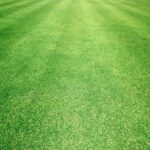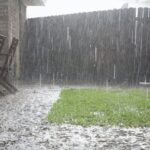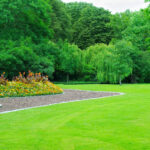Tips For Monthly Lawn Care In Georgia
Landscaping Maintenance Calendar
January- Tips From Landscaping Professionals
Turf Care
A good time for mowing a warm-season, dormant lawn is a dry winter day. It grooms the lawn and also gets rids of fallen pine needles and leaves. It also provides you with the opportunity to check your yard to see if it has any winter weeds. They can be controlled by spraying whenever the weather warms up in the springtime.
Planting
It’s a good time for planting new trees and shrubs. Check your Acworth, Georgia landscape, remove any plants that are unattractive, and replace them with plants that you like better.
February- Pruning Your Woody Shrubs and Ornamental Trees
Pruning
With the exception of birches and maples, this is a good time for pruning trees. Use a three-step method for getting rid of branches if limbs are over an inch in diameter. The first cut should be made on the under part of the limb about 6 to 8 inches from the trunk. Prune around half of the branch’s thickness.
Go to the top part of the limb and cut the limb off half way between the trunk and the underside cut. You should cut the stub that is remaining within 1/2 inch of the tree trunk.
Lawn Maintenance
In dormant warm-season turf, winter weeds are now evident. Hand pull for controlling or apply post-emergence herbicides in spot applications.
When choosing post-emergence herbicide like Weed-B-Gon, Weed-Stop or Purge, be sure to follow the directions on the label, or contact us today about our Turf Application Program. Also make sure the product has been approved for your specific type of grass. Otherwise, you might end up killing or injuring it.
Cut Branches
When Saucer Magnolia, Star Magnolia, Quince and Forsythia buds show some color, it’s easy to force them into blooming indoors. When cutting branches, be careful not to destroy the plant’s natural shape. Make sure they are in full bloom for several days before placing them indoors in a vase full of water.
March- Time To Prepare Your Landscape For Spring
Lawn Care
 As your area begins to see warm-season turf starting to green up, it is time to consider liming your grass.
As your area begins to see warm-season turf starting to green up, it is time to consider liming your grass.
This needs to be done every few years if you have acid soil. A soil test is the best way of telling whether or not you need lime. It will also tell you the exact amount that you need to apply.
If you can’t have your soil tested, general guidelines can be used: for every 100 sq. ft of lawn area use 15-20 pounds of lime. It is easier to apply pelletized lime, and also less messy, compared to the white-powdered type.
Caring For Azaleas
As the Southern classic starts coming into bloom, be sure that you mark each plant’s color if you don’t have them all planted by color already.
To get maximum impact, Azaleas should be group in masses, either in layers or color or one color. Moving them as they are blooming is okay.
However, if you wait for them to finish, you can rearrange, prune and shape Azaleas to get a better show the following year.
April Is Time To Lay Ground Cover And Begin Regular Mowings Of Turf
Mulch Applications
The winter is gone now, so it is time to remove as well as replace mulch that is around plants like Camellias, Roses and Azaleas since insects and disease spores might have overwintered in the material.
If you don’t think that insects or disease are a problem, fresh the mulch up with a 1/2 inch to 1 inch application of ground cover.
Caring For Lawns In Acworth
It is time to begin cutting warm-season turf like centipede, St. Augustine and Bermuda. Be careful that you don’t scalp your lawn. The blade height should be adjusted so that the turf has a cut appearance when you are finished, without being able to see areas of soil.
For spring cutting, here is a good general rule of thumb: With each cutting only remove about the top third of grass blades. When the grass is going through a fast growth period, try cutting your lawn once a week at least.
Herb Growing
After the frost period is over, it’s herbs planting time. It is easy to grow culinary herbs. However, make sure you plant enough of those you use frequently. In general, it takes twice the amount of fresh herbs as dried herbs to provide the same flavor for cooking.
May Is Time For Fertilizer And Growth
Lawn Fertilizing And Greening Up
After your brown turf turns green, it’s time for fertilizing regularly. Some warm-season grasses, like Zoysia and hybrid Bermuda types, like to have high-nitrogen-based lawn fertilizers.
There are some turf, like Centipede, that need no or little fertilizer and small amounts of nitrogen.
Keep in mind, when it comes to high-nitrogen fertilizers, that there is always a large first number of the ratio that is listed on the outside of the bag. To prevent your lawn from burning, make sure to apply it according to the directions on the label.
Pruning Out Winter Damage
After plants leaf out, it’s time for doing the final pruning in order to get rid of winter damage. Shoot back or cut the limb to live wood. If there is severe damage to the plant, you might want to replace it.
Annuals Add Color
It is now time to finish up planting summer annuals, like Impatiens, Salvia, Marigolds and Petunias. If your plants are in trays or pots, be sure the roots aren’t matted to the point that they aren’t able to easily expand out into the soil. If they are matted, pull the roots gently apart.
June Is Time To Pay Close Attention To Irrigation
Watering Acworth Landscapes
Pay close attention to hanging containers and baskets, since they dry out faster with warmer temperatures. Your plants should be irrigated at dawn and also dusk in order to reduce the amount of water loss due to evaporation.
When you add plants to your garden, they will need to be water more often than areas that are more established.
Houseplants Like To Be Outside Too
Houseplants should be placed outdoors in a shady area so that they can rejuvenate and enjoy fresh air. Water on a regular basis, and feed using a water-soluble, all-purpose (20-20-20) fertilizer for encouraging growth.
Mulch New Plants
Apply extra shredded bark mulch and pine straw around newly planted shrubs and trees to transition these plants better in your garden. The added mulch will help to reduce heat stress and water loss for the plant’s new roots.
July Is Hot, Don’t Mow Too Short
Acworth, Georgia Lawn Mowing
The cutting height on your lawnmower should be raised to 1 or 1 1/2 inches to help your grass with surviving heat and drought. Tall turf helps to reduce weeds, slow evaporation and shade the soil.
Birdbaths
Birdbaths should be relocated to a shady area in order to slow down evaporation and prevent water from getting too hot. The bath should be placed near a large shrub or small tree in order to provide shelter for birds and encourage it to be used.
August Lawn Care
Vegetable Planting Time
In the upper part of the South, it’s time for planting fall vegetables. Set out your transplants for collards, cauliflower and broccoli. Sow seeds of mustard, turnips, spinach, English peas, lettuce and beets.
Lawns May Need A Break
If you have dry grass, don’t mow it until you water or or until after it rains. It you mow a dry lawn it will stress the turf further and expose to the sun and wind’s drying effects.
Daylilies and Iris And Other Perennials
It is a good time for dividing these spring-blooming perennials. For any clumps that haven’t been blooming as much and become crowded, dig them up. Trim dead portions and divide roots and tubers.
Use vigorous, younger sections for replanting purposes. Amend the soil for preparing new beds using sphagnum peat moss and composed pine bark at 8 to 10 inches deep.
September Is When Fall Begins For Landscaping
Leaves Start To Fall On The Lawn
Keeping Leaves off the lawn by mulching or bagging will let the elements into the soil.
Fall Is Great To Start Planting In Your Acworth Landscape
Start to plant shrubs and trees this month. When you plant in the fall, it gives them time for transitioning in the garden and growing roots.
Back Off Watering
As temperatures start cooling, your plants won’t need as much water. Make adjustments to your watering schedule for containers, borders and lawns.
Close attention should be paid to containers since they have a tendency to get waterlogged.
October Landscaping Tips
Turf Rejuvinating
Over seed warm-season grasses like Bermuda or centipede with annual rye grass to have a green lawn during the winter months ahead. Aeration of cool Season Fescue with Over Seeding is recommended for thicker turf grass.
Annual Color Change
Get rid of spent summer annuals, prepare your soil, and then plant cool-weather annuals. A balanced slow-release fertilizer should be added, along with organic matter like composed pine bark. Before planting, till the bed.
Fall Greens and Vegetables
It isn’t too late for sowing seeds of lettuce, turnips, collards and mustard for your fall garden.
In the Middle and Upper South, for best results you might want to use lettuce transplants.
November Is Great For Gardening
Composting In Your Landscape
When you clean up your garden it will provide you with plenty of plant debris and fallen leaves for compost.
Using a far corner in your garden, mix together dry and green materials with one shovel full of soil and handful of fertilizer (this is optional and also make sure it isn’t a weed-and-feed product). If it doesn’t rain, sprinkle with water on a weekly basis. By spring you will have compost, or even sooner if the pile is turned.
Lawn Care
In the Upper and Middle South, fertilize cool season lawns such as tall fescue using a quality lawn fertilizer, like 29-3-4 or 30-2-4, which contains time-released nitrogen for preventing burn.
It will feed your lawn continuously until it is spring feeding time.
December Is Time To Prepare Your Landscape For Winter
If you have acidic soil, it would probably be beneficial to add lime to your landscape. Apply by hand or use a fertilizer spreader to broadcast. Distribute evenly and always wear gloves. Since it takes a long time for lime to react to soil, your spring garden can be helped by winter applications. For every 100 square feet, apply at 15-20 pounds.
Perform a soil test if you aren’t sure how much lime is needed by your soil.
Irrigation Maintenance
If you keep your automatic watering system on all year, now is the time for adjusting how much water is used during every cycle. During the colder months, many dormant plants need to have lower quantities of water.
A good rule of thumb is reducing the amount of time you irrigate in half whenever night temperatures stay in the 40s or lower. During rainy periods turn off the system in order to prevent over watering and reduce costs.
For more Lawn Care and Landscaping Tips follow our blog or Contact Us.




